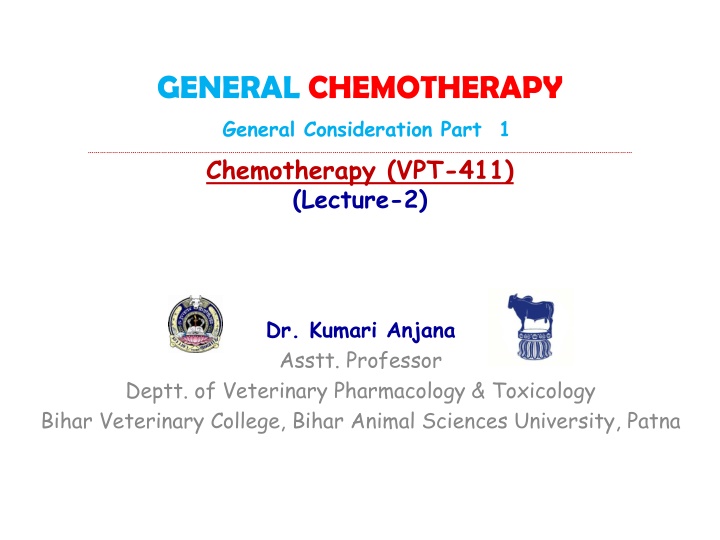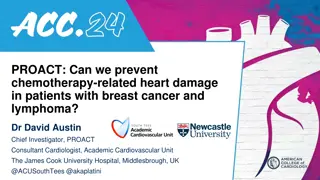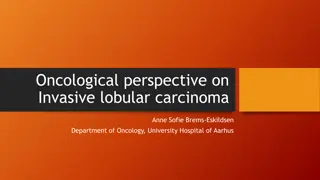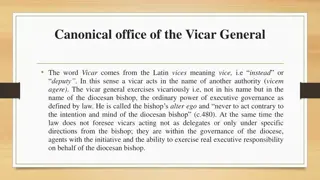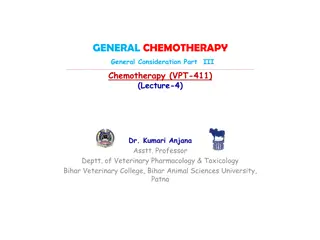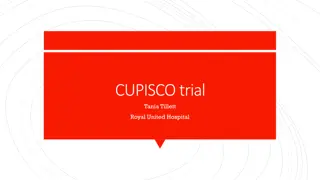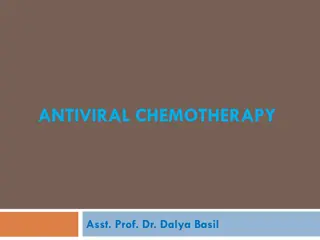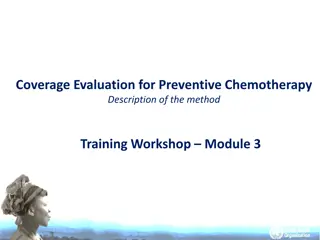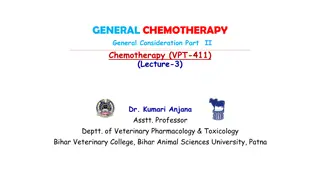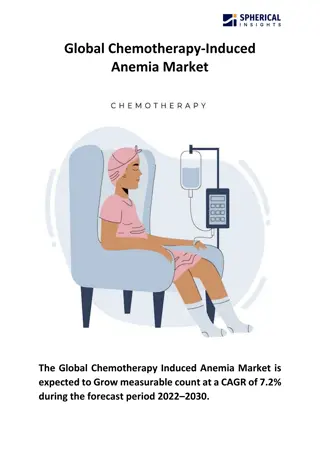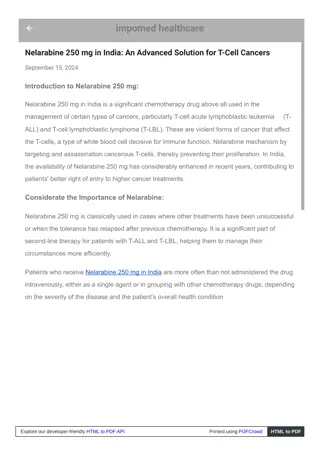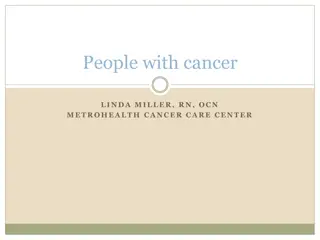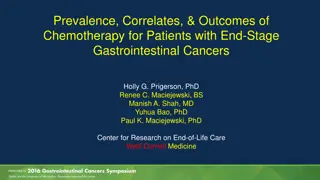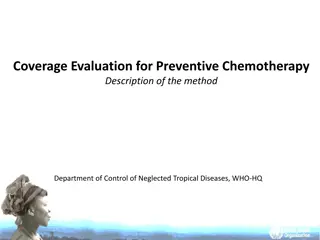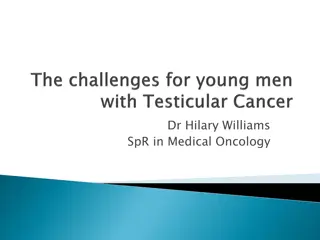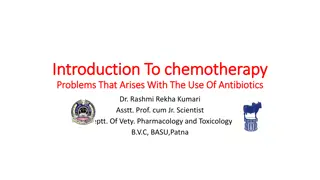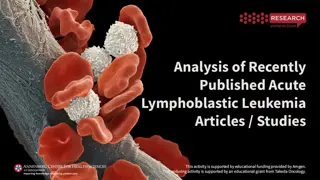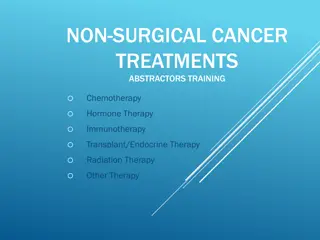GENERAL CHEMOTHERAPY
Chemotherapy agents are vital in treating systemic infections and malignancies. This article covers definitions, potency, mechanisms, and examples of chemotherapeutic agents like antibiotics and their selective toxicity, bacteriostatic, and bactericidal activity.
Download Presentation

Please find below an Image/Link to download the presentation.
The content on the website is provided AS IS for your information and personal use only. It may not be sold, licensed, or shared on other websites without obtaining consent from the author.If you encounter any issues during the download, it is possible that the publisher has removed the file from their server.
You are allowed to download the files provided on this website for personal or commercial use, subject to the condition that they are used lawfully. All files are the property of their respective owners.
The content on the website is provided AS IS for your information and personal use only. It may not be sold, licensed, or shared on other websites without obtaining consent from the author.
E N D
Presentation Transcript
GENERAL CHEMOTHERAPY General Consideration Part 1 Chemotherapy (VPT-411) (Lecture-2) Dr. Kumari Anjana Asstt. Professor Deptt. of Veterinary Pharmacology & Toxicology Bihar Veterinary College, Bihar Animal Sciences University, Patna
Content of the chapter Definition Potency of Chemotherapeutic agents MIC MIC90 MAC PAE Biphasic effect Chemotherapy Chemotherapeutic agents Antibiotics Antimicrobial Agents Selective toxicity Bacteriostatic activity Bactericidal activity Antibacterial spectrum
Chemotherapy It is treatment of systemic infection/ malignancy with specific drugs that have selective toxicity organism/ malignant cell with no/ minimal effect on the host cells. for the infecting
Chemotherapeutic agents Chemotherapeutic agents are the drugs used in Chemotherapy to interfere with the functioning of foreign cells. These synthetic antimicrobials. include both antibiotics and It antiviral, antiprotozoal, anthelmintic and anti- neoplatic drugs. cover all antibacterial, antifungal,
Antibiotics Antibiotics constitute a large portion of chemotherapeutic agent. Antibiotics are substances produced by microorganism (fungi, Actinomycetes or bacteria), which selectively the growth or kill other microorganism at very low concentration. suppress
Antimicrobial Agents Are term used to designate synthetic as well as naturally obtained drug that attenuate microorganism.
Selective toxicity Selective toxicity is the ability of an antimicrobial agent microorganism without harming the cells of the host. to kill an invading
Bacteriostatic activity: It is ability of an antibacterial agent to inhibit/suppress the growth and multiplication of bacteria. Bactericidal activity: It is ability of an antibacterial agent to cause the death of bacteria.
Antibacterial spectrum Antibacterial spectrum refers to the range of pathogenic organisms against which an anti-microbial agent is active. Broad spectrum anti-microbials: Effective against wide variety (Gram positive & Gram negative) of organism. Narrow Spectrum anti-microbials: Active against a few or a limited group of bacteria. Extended Spectrum anti-microbials: anti-microbials that are effective against Gram positive bacteria and also against a significant number of Gram negative bacteria. Is the term applied to
Potency Potency antimicrobial activity per milligram of a chemotherapeutic agent. may be defined as the Potency is usually expressed on the basis of MIC, MBC or MAC.
Minimum inhibitory concentration: MIC Minimum inhibitory concentration is lowest concentration of an anti-microbial drug that prevents visible growth of bacteria. Fig: Plate showing inhibition zone formation Source : Google image
MIC90 It is the MIC necessary to inhibit 90 percent of the organisms tested.
MBC MBC: It is the lowest concentration of an anti-microbial drug that kills the 99.99 percent of bacteria. Fig: Plate showing % inhibition of bacteria, Source : Google image
Minimum antibiotic concentration MAC Minimum antibiotic concentration :It is the concentration of an anti-microbial drug that reduces the growth of an organism in-vitro by a factor of 10. MAC may be 1/4 or 1/10 of the MIC depending upon drug and the organism.
Post antibiotic effect (PAE) After brief exposure with antibiotic, the organism is placed in an antibiotic free medium, it starts multiplying again after a lag period. This lag period in growth resumption is known as post antibiotic effect e.g. A long post antibiotic effect is noted with fluoroquinolones, aminoglycosides, - lactam antibiotics. Synergistic prolongation of post antibiotic effect has been demonstrated by combination of -lactam with aminoglycosides.
Biphasic effect It is a phenomena in which low doses of an antibacterial in vitro against certain bacteria (e.g. Staphylococci and streptococci) produce lysis of organism whereas high doses do not. The Biphasic effect is associated with Beta-lactam antibiotic, differential sensitivity of the penicillin binding proteins to high doses of Beta- lactams that inhibit the autolysins. it is due to
Concentration dependent inhibition Inhibitory effect depends on the ratio of peak concentration to the MIC, the same daily dose produces better action when given as single dose than if it is divided into 2-3 portion. e.g.aminoglycoside (rupture of cell membrane requires high concentration which leads to leakage of smaller ions).
Time dependent inhibition Antimicrobial action depends upon the length of time remains above MIC, division of daily dose has better effect. the concentration The dose should be shaped that the surviving organism starts multiplying and cidal action is fluoroquinolones, cephalosporins. exerted e.g.
